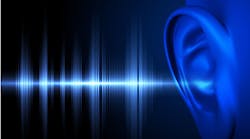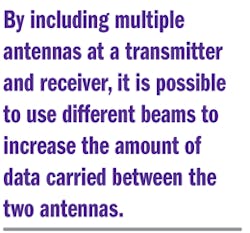Wireless communications systems must often overcome multipath propagation as part of different operating environments, and it is no different for systems equipped with multiple-input, multiple output (MIMO) antenna setups. Multipath results from radio waves bouncing off walls, buildings, and other objects between a transmitter and receiver. Studying the effects of multipath radiation is fairly straightforward with a single transmit antenna and receive antenna. However, it becomes proportionally more complex with MIMO—radio waves move between multiple antenna elements from the transmitter to the receiver and then additional beams come from reflections.
To help understand the possible multipath conditions in different radio environments, Luis Mendo of the Technical University of Madrid developed a way to study multipath in MIMO systems using sound waves from inexpensive audio speakers. By capturing sound with microphones at a mock “receiver,” it then becomes possible to analyze the multipath effects with the aid of a popular math-based, PC software program.
Many of the exhibitors and visitors at the recent EDI CON 2016 in Boston spoke hopefully of their future roles in supplying components, test equipment, and engineering solutions for future Fifth-Generation (5G) wireless communications networks. Although standards have yet to be formulated for 5G wireless networks, most developers agree that MIMO techniques must handle the large amounts of data representing greater numbers of wireless communications systems users demanding more voice, video, and data communications. Use of sound instead of radio waves to experiment with different MIMO concepts provides a practical means of exploring the spatial effects of various environments and operating conditions on MIMO techniques.
The test equipment is actually quite available, consisting of a pair of laptop computers with audio capabilities that are used as a receiver and a transmitter. A pair of loudspeakers is placed at the transmitter; they need not be of particularly good quality. The transmitter processing and sound generation is done with the aid of MathWorks’ MATLAB simulation software. The receiver has a pair of microphones that pick up the transmitted sound waves and use a standard sound editor for recording. The saved audio files are read and analyzed with the help of MATLAB software. The test equipment for this audio version of MIMO analysis is simple and low-cost, and provides surprisingly comprehensive analysis of almost any operating environment.
See “Illustrating MIMO Transmission by Means of Sound Waves,” IEEE Antennas & Propagation Magazine, Vol. 58, No. 4, August, 2016, p. 90.


